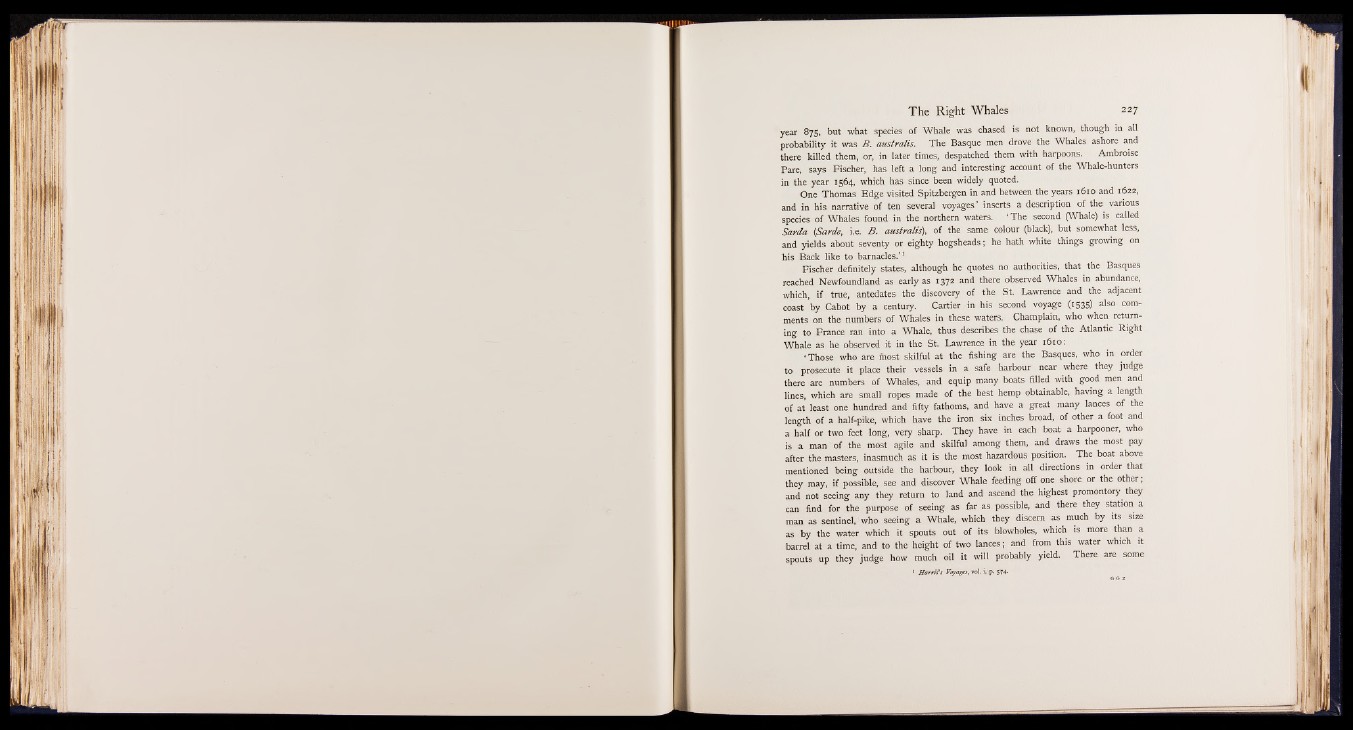
year 875, but what species of Whale was chased is not known, though in all
probability it was B . australis. The Basque men drove the Whales ashore and
there killed them, or, in later times, despatched them with harpoons. Ambroise
Pare, says Fischer, has left a long and interesting account of the Whale-hunters
in the year 1564, which has since been widely quoted.
One Thomas Edge visited Spitzbergen in and between the years 1610 and 1622,
and in his narrative of ten several voyages' inserts a description of the various
species of Whales; found in the northern waters. ‘ The second (Whale) is called
Sarda {Sards. i.e. B . australis), of the same colour (black), but somewhat less,
and yields about seventy or eighty hogsheads; he hath white things growing on
his Back like to barnacles.’ 1
Fischer definitely states, although he quotes no authorities, that the Basques
reached Newfoundland as early as 1372 and there observed Whales in abundance;;
which, if true, antedates the discovery of the St. Lawrence and the adjacent
coast by Cabot by a century. Cartier in his second voyage (1535) also comments
on the numbers of Whales in these waters. Champlain, who when returning
to France ran into a Whale, thus describes the chase of the Atlantic Right
Whale as he observed it in the St, Lawrence in the year 1610:
‘ Those who are most skilful at the fishing are the Basques, who in order
to prosecute it place their vessels in a safe harbour near where they judge
there are numbers of Whales, and equip many boats filled with good men and
lines, which are small ropes made of the best hemp obtainable, having a length
of at least one hundred and fifty fathoms, and have a great many lances of the
length of a half-pike, which have the iron six inches broad, of other a foot and
a half or two feet long, very sharp. They have in each boat a harpooner, who
is a man of the most agile and skilful among them, and draws the most pay
after the masters, inasmuch as it is the most hazardous position. The boat above
mentioned being outside the harbour, they look in all directions in order that
they may, if possible, see and discover Whale feeding off one shore or the other;
and not seeing any they return to land and ascend the highest promontory they
can find for the purpose of seeing as far as possible, and there they station a
man as sentinel, who seeing a Whale, which they discern as much by its size
as by the water which it spouts out of its blowholes, which is more than a
barrel at a time, and to the height of two lances; and from this water which it
spouts up they judge how much oil it will probably yield. There are some
1 H arries Voyages, vol. i. p. 574-